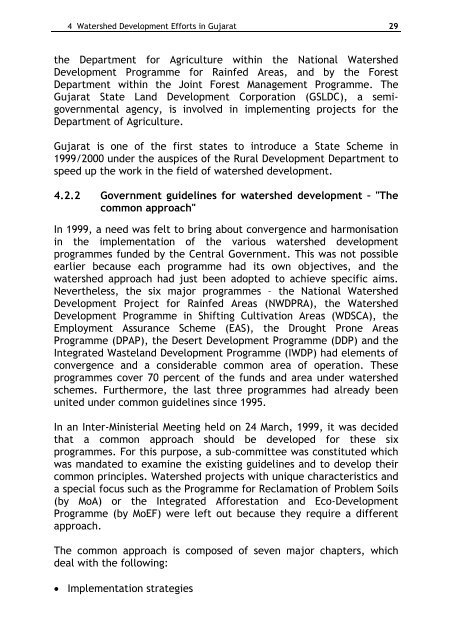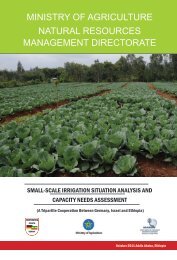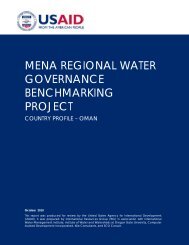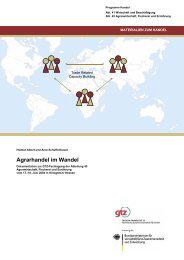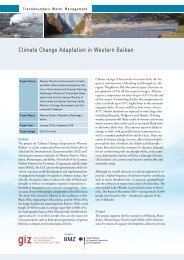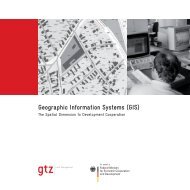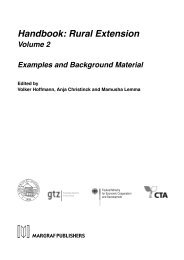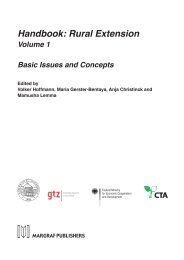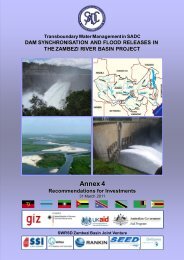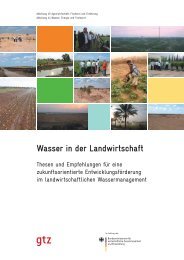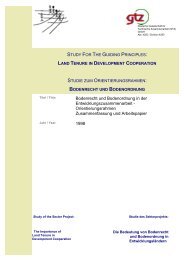Watershed Development in Gujarat - edoc - Humboldt-Universität zu ...
Watershed Development in Gujarat - edoc - Humboldt-Universität zu ...
Watershed Development in Gujarat - edoc - Humboldt-Universität zu ...
Create successful ePaper yourself
Turn your PDF publications into a flip-book with our unique Google optimized e-Paper software.
4 <strong>Watershed</strong> <strong>Development</strong> Efforts <strong>in</strong> <strong>Gujarat</strong> 29the Department for Agriculture with<strong>in</strong> the National <strong>Watershed</strong><strong>Development</strong> Programme for Ra<strong>in</strong>fed Areas, and by the ForestDepartment with<strong>in</strong> the Jo<strong>in</strong>t Forest Management Programme. The<strong>Gujarat</strong> State Land <strong>Development</strong> Corporation (GSLDC), a semigovernmentalagency, is <strong>in</strong>volved <strong>in</strong> implement<strong>in</strong>g projects for theDepartment of Agriculture.<strong>Gujarat</strong> is one of the first states to <strong>in</strong>troduce a State Scheme <strong>in</strong>1999/2000 under the auspices of the Rural <strong>Development</strong> Department tospeed up the work <strong>in</strong> the field of watershed development.4.2.2 Government guidel<strong>in</strong>es for watershed development – "Thecommon approach"In 1999, a need was felt to br<strong>in</strong>g about convergence and harmonisation<strong>in</strong> the implementation of the various watershed developmentprogrammes funded by the Central Government. This was not possibleearlier because each programme had its own objectives, and thewatershed approach had just been adopted to achieve specific aims.Nevertheless, the six major programmes – the National <strong>Watershed</strong><strong>Development</strong> Project for Ra<strong>in</strong>fed Areas (NWDPRA), the <strong>Watershed</strong><strong>Development</strong> Programme <strong>in</strong> Shift<strong>in</strong>g Cultivation Areas (WDSCA), theEmployment Assurance Scheme (EAS), the Drought Prone AreasProgramme (DPAP), the Desert <strong>Development</strong> Programme (DDP) and theIntegrated Wasteland <strong>Development</strong> Programme (IWDP) had elements ofconvergence and a considerable common area of operation. Theseprogrammes cover 70 percent of the funds and area under watershedschemes. Furthermore, the last three programmes had already beenunited under common guidel<strong>in</strong>es s<strong>in</strong>ce 1995.In an Inter-M<strong>in</strong>isterial Meet<strong>in</strong>g held on 24 March, 1999, it was decidedthat a common approach should be developed for these sixprogrammes. For this purpose, a sub-committee was constituted whichwas mandated to exam<strong>in</strong>e the exist<strong>in</strong>g guidel<strong>in</strong>es and to develop theircommon pr<strong>in</strong>ciples. <strong>Watershed</strong> projects with unique characteristics anda special focus such as the Programme for Reclamation of Problem Soils(by MoA) or the Integrated Afforestation and Eco-<strong>Development</strong>Programme (by MoEF) were left out because they require a differentapproach.The common approach is composed of seven major chapters, whichdeal with the follow<strong>in</strong>g:• Implementation strategies


